Text
Source:https://www.tumblr.com/itsmemarkyaesthetic01

MY REMARKABLE WRITERS
2 Remarkable Filipino Writers in the Different Periods in Philippine Literature
A vast and varied body of writings, Philippine literature reflects the history, culture, and customs of the nation. Over the years, a number of superior writers have come out of the Philippines, establishing works that have won over readers both domestically and abroad. Two of the most notable Filipino authors from various eras of Philippine literature will be highlighted in this introduction.
In the Period of Enlightenment (1872–1888), the Filipino spirit was reawakened after 300 years of apathy under Spanish control when three priests, Gomez, Burgos, and Zamora, were guillotined without adequate evidence of guilt.
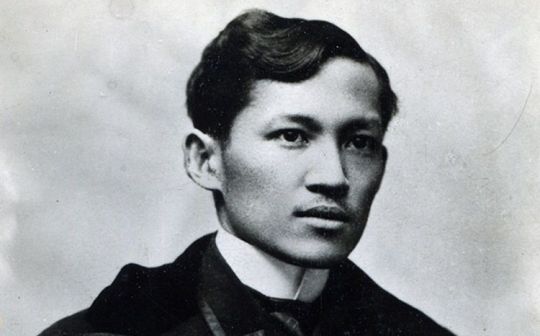
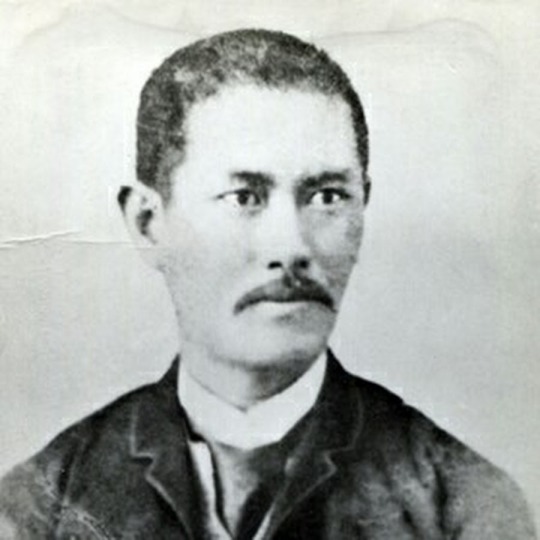
Dr. Jose Rizal was a nationalist, author, and revolutionary from the Philippines who inspired a movement for Philippine independence. His legacy has continued to motivate Filipinos to fight for social justice and independence.
Graciano Lopez Jaena was a key figure in the late 19th-century Philippine independence movement, rising to prominence in the Propaganda Movement. He was persecuted and exiled, but never wavered in his dedication to the nationalist cause.
Dr. Jose Rizal and Graciano Lopez Jaena were both influential figures in the Philippine nationalist movement during the late 19th century. Both Rizal and Lopez Jaena were important figures who played a key role in the development of Philippine nationalism and the struggle for independence from Spanish colonial rule. Their works and ideas continue to inspire and influence Filipinos today.
Consequently, the American Regime (1898–1944) was heavily influenced by American culture and values, resulting in a shift from traditional forms to modern and westernized styles. English became the dominant language of literature, replacing Spanish, and many writers adopted the themes, forms, and techniques of American writers.

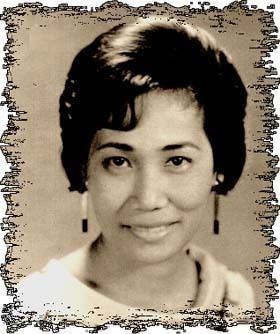
This period saw the emergence of notable writers such as Jose Garcia Villa and Paz Marquez-Benitez, who explored diverse themes such as identity, colonialism, and social justice. Despite its American influence, Philippine literature during this time also reflected the unique experiences and struggles of the Filipino people under colonial rule.
Jose Garcia Villa was a Filipino poet, author, and visual artist renowned for his avant-garde writing style and influence on generations of authors and poets.
Paz Marquez-Benitez was a Filipino author and educator born in 1894 who wrote "Dead Stars" and contributed plays, short stories, and essays to publications. She died in 1983.
Both Marquez-Benitez and Villa were important figures who helped establish Philippine literature in English as a vital part of the country's cultural heritage. Through their writing and criticism, they contributed to the growth and development of modern Filipino literature and helped pave the way for future generations of writers.


After the Americans, the Japanese Period from 1941 to 1945 entered. One of the two remarkable writers during this period was Juan Laya who is unable to adapt to the Japanese occupation and become a prolific writer in Filipino, contributing to Philippine literature and social realism.
And one of the most important authors in Philippine literature Liwayway Arceo is a well-known Filipino author who examines social and political concerns in her short tales and novels, such as "Lupang Tinubuan".
Both Laya and Arceo were important figures who helped shape Philippine literature during the Japanese period. Through their works, they captured the complexities of life under occupation, and helped preserve and promote the Filipino language and national identity during a time of great challenge and upheaval in the country's history.
In this period, it involves and introduces the poems Haiku, Tanka, Tanaga, and Karaniwang Uri, which are known in this new century.
Alternatively, Philippine literature in English from 1941 to 1945 was halted because of the strict Japanese prohibitions on the writing and publishing of works in English. Philippine literature in English experienced a dark period. But there were two unforgivable and remarkable writers during this dark period.


This period was connected to the American Regime, where there are three sub-periods: the Period of Re-Orientation (1898–1902), the Period of Imitation (1910–1923), and the Period of Self-Discovery (1925–1941), where there are two remarkable writers, Fernando M. Maramag and Carlos P. Romulo, who are the pioneering English poets during this period.
One of the founders of contemporary Filipino poetry Fernando M. Maramag was a founding figure of contemporary Filipino poetry, using English language and a formalist style to explore the struggles of a young woman in the country.
Another one, Carlos P. Romulo was a Filipino diplomat, journalist, author, and politician who achieved significant accomplishments for his nation, both domestically and internationally.
Overall, both Maramag and Romulo were important figures who made significant contributions to the development of Philippine literature in English during the period from 1941 to 1945. Through their works, they helped to establish and shape the literary culture of the country, and their legacy continues to inspire and influence Filipino writers today.
Following that, the Filipino youth are awake during the Period of Activism, known as the Bloody Placards Period from 1970 to 1972. Pociano Pineda claims that domestic and international issues contributed to the 1970–1972 youth activism. Activism and our country's history are intertwined. Pineda added that the youths had demonstrated at this point that our nationalism and race are not formed by perpetual denial. The amount of patience one has is limited. If overworked, it can erupt like a volcano.
However, the New Society Period from 1972 to 1980 approached, and it was interconnected to the Period of Activism, where the Green Revolution, family planning, a healthy diet, the environment, drug addiction, and pollution are just a few examples of subjects that were almost universally related to how the country was developing or progressing. The New Society made an effort to stop pornography and other publications that had a negative impact on people's morals. The school organizations and all newspapers were temporarily suspended.
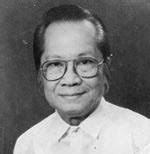

Because of that, the two remarkable writers facing this period are Ponciano Pineda was a poet who was known for his socially relevant poetry that tackled themes such as poverty, oppression, and the struggle for social justice. His works often highlighted the plight of the poor and marginalized members of society, making his poetry an important vehicle for social critique and commentary during this period.
Aniceto Silvestre, on the other hand, was a poet and literary and cultural critic who played a key role in shaping the development of Philippine literature during this period. He wrote a number of influential works on Philippine literature, including "Philippine Literary Criticism," which remains an essential resource for students and scholars of Philippine literature.
Overall, both Pineda and Silvestre made important contributions to Philippine literature during the New Society Period from 1972 to 1980. Through their works, they helped to shape the literary and cultural landscape of the country, and their influence continues to inspire and influence contemporary Filipino writers today.
Then came the Period of the Third Republic from 1981 to 1985, when the lifting of military rule in the Philippines led to a new nation known as the "New Republic" or "Third Republic," as our late President Ferdinand E. Marcos proclaimed during this period.


The two most remarkable writers during this period are Gilda Cordero-Fernando is a well-known writer, publisher, and cultural icon who has published extensively on topics such as women's issues, Philippine culture, folklore, and history.
Damiana L. Eugenio was a Filipino folklorist and literary expert who specialized in Philippine folklore, mythology, and stories. She received numerous honors for her contributions to Philippine culture and literature, including "Philippine Folk Literature".
Both Eugenio and Cordero-Fernando were instrumental in shaping the literary and cultural landscape of the Philippines during this period. Through their works, they helped to preserve and promote traditional Philippine culture and literature, while also addressing the contemporary concerns and issues of the time. Their contributions continue to inspire and influence contemporary Filipino writers today.
In the year when the Post-EDSA 1 Revolution (1986-1985) was published, journalism underwent a change from years of "guided newspapering" to free and ethical reporting. The "establishment" publications that supported Marcos shut down, while the alternative press rose to prominence.


During this time, two remarkable writers were Bienvenido N. Santos was a Filipino-American writer, professor, and diplomat known for his works that addressed the lives of Filipino immigrants in America and the Philippines, such as "March of Death".
Lastly, Salvador P. Lopez was a writer, journalist, and educator who played a key role in shaping the development of Philippine literature and culture in the post-World War II era. He is best known for his influential essay, "Literature and Society," which argued for the importance of literature as a means of cultural expression and social criticism. Lopez also served as the first Philippine ambassador to the United Nations.
Overall, both Santos and Lopez made important contributions to Philippine literature during the period Post-EDSA 1 Revolution. Through their works, they helped to shape the literary and cultural landscape of the country, and their influence continues to inspire and influence contemporary Filipino writers today.
The literature of the Philippines has a long and varied history that reflects the culture, traditions, and struggles of the country.
Famous authors have contributed to the growth and evolution of Philippine literature from the Enlightenment to the Third Republic. Crafted by Jose Rizal, Graciano Lopez, Jose Garcia Villa, Paz Marquez-Benitez, Liwayway Arceo, Fernando M. Maramag, Carlos P. Romulo, Ponciano Pineda, Aniceto Silvestre, and Gilda Cordero-Fernando proceed to move and teach pursuers both locally and globally.
These authors have contributed to the development of a variety of literary forms, including poetry, short stories, essays, and plays, and they have investigated topics like identity, colonialism, social justice, and activism. Literature in the Philippines continues to be a vibrant and dynamic art form that adapts to the nation's challenges and shifting times.
9 notes
·
View notes
Text
THE AUTHORS EACH PERIOD.
PERIOD OF ENLIGHTENMENT.
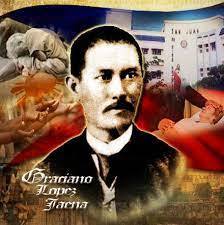
Graciano López y Jaena, commonly known as Graciano López Jaena, was a Filipino journalist, orator, reformist, and national hero who is well known for his newspaper, La Solidaridad. Philippine historians regard López Jaena, along with Marcelo H. del Pilar and José Rizal, as the triumvirate of Filipino propagandists. Wikipedia
Born: December 18, 1856, Jaro
Died: January 20, 1896, Barcelona, Spain
Parents: Placido López, Maria Jacoba Jaena
Place of burial: Fossar de la Pedrera, Barcelona, Spain
Nationality: Spanish
Books: Graciano López Jaena: Speeches, Articles, and Letters
Education: St. Vincent Ferrer Seminary; University of Valencia
WRITE: FRAY BATOD
Due to financial problems, he dropped out and returned to Iloilo to practice medicine. During this period, his visits with the poor began to stir feelings about the injustices that were common. At the age of 18 he wrote the satirical story Fray Botod, which depicted a fat and lecherous friar.
SOURECE:https://en.wikipedia.org/wiki/Graciano_L%C3%B3pez_Jaena#Biography

Marcelo Hilario del Pilar y Gatmaitán, commonly known as Marcelo H. del Pilar and also known by his pen name Pláridel, was a Filipino writer, lawyer, journalist, and freemason. Del Pilar, along with José Rizal and Graciano López Jaena, became known as the leaders of the Reform Movement in Spain. Wikipedia
Born: August 30, 1850, Bulacan
Died: July 4, 1896, Old Hospital de la Santa Creu, Barcelona, Spain
Nickname: Plaridel
Full name: Marcelo Hilario del Pilar y Gatmaitán
Siblings: Toribio H. del Pilar, Fernando del Pilar, Valentín del Pilar, MORE
Parents: Blasa Gatmaitán, Julián Hilario del Pilar
Children: Anita H. del Pilar de Marasigan, MORE
WRITE: La soberanía monacal en Filipinas
“La Soberanía Monacal en Filipinas” (Friar Supremacy in the Philippines) was among the first pamphlets he wrote in Spain. Del Pilar headed the political section of the Asociación Hispano-Filipina founded in Madrid by Filipinos and Spanish sympathizers for the purpose of agitating for colonial reforms.
SORCE:https://www.philippinemasonry.org/marcelo-h-del-pilar.html#:~:text=%E2%80%9CLa%20Soberan%C3%ADa%20Monacal%20en%20Filipinas,of%20agitating%20for%20colonial%20reforms.
PERIOD OF AMERICAN REGIME
0 notes
Text
ABOUT POST ESDA REVOLUTION AND THE CONTRIBUTION IN PHILIPPINE LITERATURE.
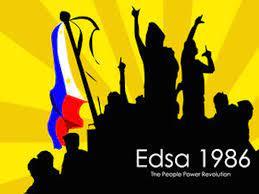
The year 1986 marks a new beginning of a new scene for Filipino writers and artists. It saw the downfall of late President Ferdinand Marcos when he placed the Philippines under martial rule last September 21,1972. This action does not only oppress the writers' right to free expression but also created conditions that made collaboration and cooperation convenient choices for artists' struggling for recognition and survival. Furthermore, the growth of underground writing was created both in urban and in the countryside.
The popular "Edsa Revolution" (EDSA, a highway in Metro Manila that runs north to south from Caloocan to Baclaran) has paved the way for the flight of the dictator and his family to Hawaii, USA on February 24,1986. The revolt established the presidency of Corazon Aquino, which marked the "restoration" of a pre-Martial Law society. However, the Philippines did not recover that easily. The years that followed "Edsa" was a wild "roller-coaster" ride for many Filipinos. The unease times was caused by natural disasters that left the economic plans in shambles.
Militancy and belligerence best describes writing under the Martial Law regime. With the overthrow of the enemy in 1986, however, the literary activity showed certain disorientation manifesting itself in a proliferation of concerns taken up by individual writers and groups.
Creative writing centers after Edsa maybe grouped into two. Academic institutions where Creative Writing is part of the curricular offerings, and students majoring in Literature are able to come in contact with elder creative writers/critics/professors belonged to the first group. Such academic institutions includes the Silliman University; the University of the Philippines; the Ateneo de Manila University; De la Salle University; and last but not the least, San Carlos University in Cebu.
The second group is composed of writers' organizations that periodically sponsor symposia on writing and/or set up workshops for its members and other interested parties. UMPIL (Unyon ng mga Manunulat ng Pilipino), PANULAT (Pambansang Unyon ng mga Manunulat), Panday-Lipi, GAT (Galian sa Arte at Tula), KATHA, LIRA (Linangan sa Imahen, Retorika at Anyo), GUMIL (Gunglo Dagiti Mannurat nga Ilokano), LUDABI (Lubas sa Dagang Binisaya) and P.E.N.
Writers get to hear about new developments in writing and derive enthusiasm for their craft through these twin centers. The two "unyon" function as umbrellas under which writers belonging to a diversity of organizations socialize with fellow writers.
Award giving bodies, annual competitions and publications provide the incentives for writers to keep producing. These actions perform the important service of keeping the writers in the public consciousness, making it possible for commentators and audiences to identify significant established writers and give attention to emerging new talents.
The National Commission on Culture and the Arts (NCCA), a post-EDSA state sponsored institution, was created by the law in 1992, superseding the Presidential Commission on Culture and the Arts which was established in 1987. The said institution has a Committee on Literary Arts which funds workshops, conferences, publications and a variety of projects geared towards the production of a "national literature". The committee has the aim of developing writing that is multi-lingual, multi-cultural, and truly national.
Non-governmental organizations have helped hand in hand with some institutions in giving recognition to writers from specific sectors in the society. These NGO's includes the Amado V. Hernandez Foundation; the GAPAS foundation, and the KAIBIGAN.
Campus publications are another group of outlet that is of importance as a source of non-traditional, experimental writing. These campus publications could either be a weekly student newspapers, quarterly magazines, or annual literary journals. The University of the Philippines has the Collegian; The Diliman Review; and The Literary Apprentice. Silliman University has Sands and Coral; Ateneo de Manila University issues Heights and Philippine Studies; De la Salle University has Malate, Likha, and Malay to offer; University of Santo Tomas publishes The Varsitarian.
Overall, the character of the Philippine literary scene after "EDSA" maybe pinpointed be referring to the theories that inform literary production, to the products issuing from the publishers, to the dominant concerns demonstrated by the writers' output, and to the direction towards which literary studies are tending.
1. There is in the academe an emerging critical orientation that draws its concerns and insights from literary theorizing current in England and the United States.
2. Post-EDSA publishing has been marked by adventurousness, a willingness to gamble on "non-traditional" projects.
3. The declining prestige of the New Criticism, whose rigorous aesthetic norms has previously functioned as a Procrustean bed on which Filipino authors and their works were measured, has opened a gap in the critical evaluation of literary works.
4. The fourth and final characteristic of post-EDSA writing is the development thrust towards the retrieval and the recuperation of writing in Philippine languages other than Tagalog.
The effect of post edsa revolution contributes to the philippine literature, because of death Ninoy Aquino in 1983 , the temper of poetry and theatre derived much its heat and direction from the political culture of underground national democratic movement. Due to this incident the impact of his death made people more literate.
SOURCE:https://www.slideshare.net/JessPalo1/litt-1-report
0 notes
Text
THE PERIOD OF NEW SOCIETY.

The period of the New Society started on September 21, 1972.Where the Carlos Palanca Awards still continued to give annual awards. In this time most of writing uses this themes that dealt with the development or progress of the country –like the Green Revolution, family planning, proper nutrition, environment, drug addiction and pollution, the people are very fond those who write this kind of theme. In this period they tried to stop pornography or those writings giving bad influences on the morals of the people. All school newspapers were temporarily stopped and so with school organizations, because some of the student might become abusive to there freedom and they will spread fake news. The military government established a new office called the Ministry of Public Affairs that supervised the newspapers, books and other publications. In order to prevent those publisher to post or release an bad influences information that can affect to our nation. Also government took part in reviving old plays like the Cenaculo, the Zarzuela and the Embayoka of the Muslims, which make people happy and to preserve the culture of the philippines. They even rebuild the metropolitan theater in order to have a place for these plays. The filipino poetry during the period of new society deals with the themes of patience, regard for native culture, customs and the beauties of nature and surroundings, because they really like to impress people. The filipino writer this time are so very impressive , because they help other people through their own writing that make people life better.
#article about new society
SOURCE:https://group4lit1webpage.wordpress.com/period-of-activism-and-the-new-society/#:~:text=The%20period%20of%20the%20New,environment%2C%20drug%20addiction%20and%20pollution.
0 notes
Text
POEM.

The man who lit-up a little fire
a chaos beggins in blink of eye
people hearts awakened with a content
the will of fire pushing people to their last
a corrupted seed planted on people
desire of freedom to seek expressing.
The young one fight with pen
that an act cannot be taken
the undying will of flame of youth
becoming a unite with a strong bond
together with their comrades battling
against the man who lit-up.
Bloody battle against,violent forces
the person who's been posses of pen
trying to voice out the agony felt by one's
under a govern by the strong forces
people who's ruled by strong forces
are become one against the forces
A writer that made every one aware
the voice's that can't come out its own
a something that have been lost
every one struggling on something
losing a energy on everthing
battling against itself is an art.
People who felt despair on their being revolt
are just disparate to take back
the thing that they lost on something
one by one finding on their own thing
the bloody option people's choices
the people heart full of nationalism.
#Poem that desribe the philippines literature during activism period.
1 note
·
View note
Text
DANGER

World is cruel the perspective
of mine help me to avoid
the lustful desire active
that body needs to avoid.
#tanaga 5
0 notes
Text
PATIENCE

The time spent of these past years
patience that you have been train
the self-loving to these years
the body of man that train.
#tanaga 4
1 note
·
View note
Text
MY LITTLE KIND

The smallest act of kindness
Is the most important act
Being kind is not weakness
The people will know that fact.
#tanaga 3
1 note
·
View note
Text
LITTLE HEART

For having a small heart
i must accept everything
because having called " art "
for doing the small acting.
#TANAGA 2
1 note
·
View note
Text
COLD HEART

The maidens heart is content
my eyes laid with the content
the iron heart fell, so cold
the memories are just old
#TANAGA 1
1 note
·
View note
Text
FAILURE

I fall in the dark
disgusting pathetic self
and rise up again.
#HAIKU 5
1 note
·
View note
Text
RISE-UP

Failing is a way
giving up is an action
staying is a choice.
#HAIKU 4
1 note
·
View note
Text
BEAUTY

The maidens cold heart
the time i stare her figure
i fallen inlove.
#HAIKU 3
1 note
·
View note
Text
LIFE

The life always hard
the action reflect upon
oneself, do the work.
#HAIKU 2
1 note
·
View note
Text
MY LIGHT

I see her as light
her beauty attracts my eyes
that save me in pain.
#HAIKU 1
2 notes
·
View notes
